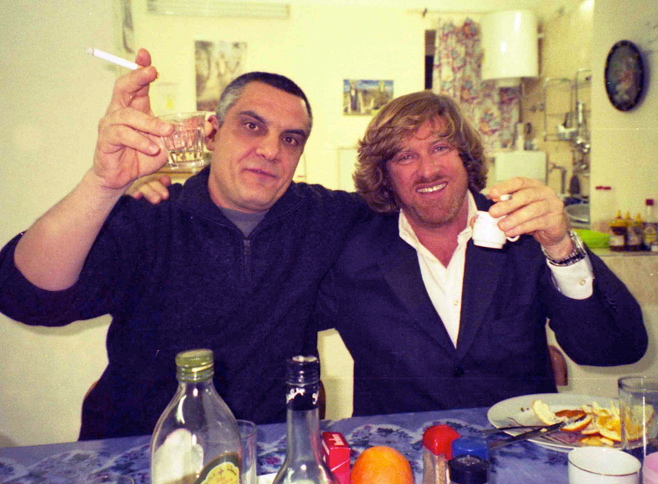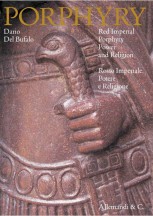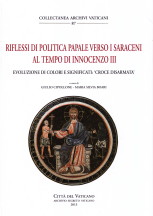Prof. Dario Del Bufalo
Specialist in stone sculpture , colored marbles , glyptics , restoration and Geoarchaeology
Remembering Luigi De Cesaris…

Monastery of Saint Anthony, Egypt . Luigi De Cesaris and Dario Del Bufalo toast to Folco Quilici for “The Empire of Marble (2002)” filming
Between 2006 and 2008 De Cesaris led the restoration of the tetrarchic frescoes in the Temple of Amun in Luxor supported by USAID, ARCE (American Research Center in Egypt). During the work, Luigi asked my advice concerning the iconography of the images that he was cleaning and unveiling. I would often go and visit De Cesaris at his Egyptian sites (before he departed this life prematurely leaving us with a great void), as I was also in that country for research on the marbles in the Eastern Desert. “I knew Louis as a child, because he lived with his family in Castel di Leva very close to our house to Valleranello and he would often come to play in the pool with us with his brothers.”
In those days, we had a lively debate on the iconographic origin of the 4 figures represented in the central niche that by tradition supposedly portrayed the Tetrarchs, but in my opinion, they are Christian images (due to the presence of halos, togas and Christian attributes, such as the olive branch) and were related to the hagiographic figural group of the Four Crowned Saints (the famous Damnati ad Metalla in the porphyry quarries at Thebes, just north of Luxor). The more we discussed the topic and the cleaning and restoration continued, the more Luigi De Cesaris was convinced that my hypothesis that the figures of the 4 Emperors (Tetrarchs) had been transformed into the 4 Saints, perhaps right after the end of the Great Persecution by Diocletian (in 303) in the aftermath of Constantine’s Edict of Toleration (in 313). At the end of the work, Luigi was convinced that the figures had been modified at a later stage after the first version of the tetrarchic frescoes and we were in complete agreement on the hypothesis of the iconographical transformation of the 4 Emperors into the 4 Saints.
Download post extract from: Porphyry… » PDF ENGLISH (1,4 MB)
 English
English Italiano
Italiano
